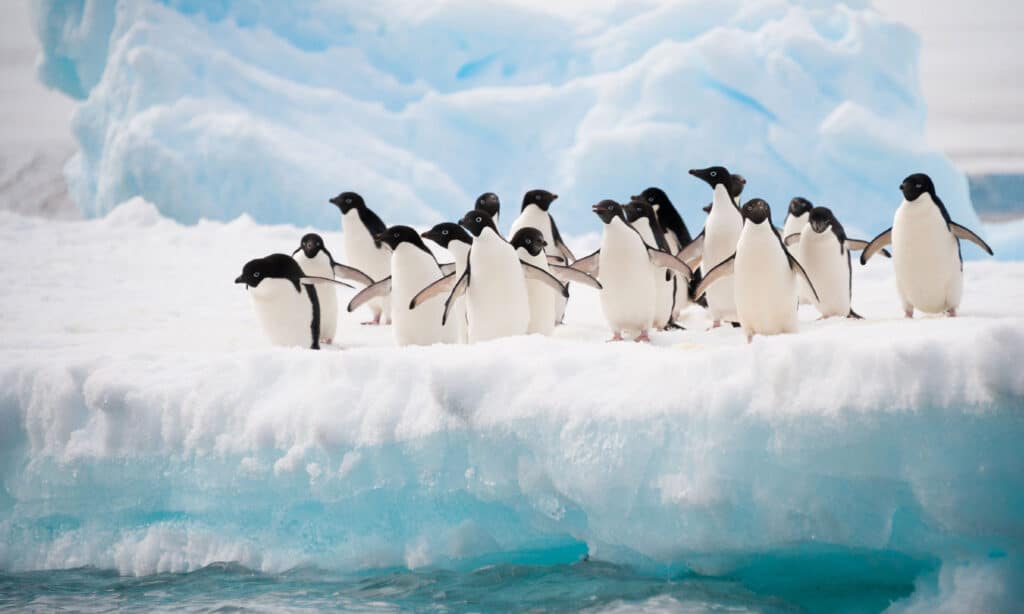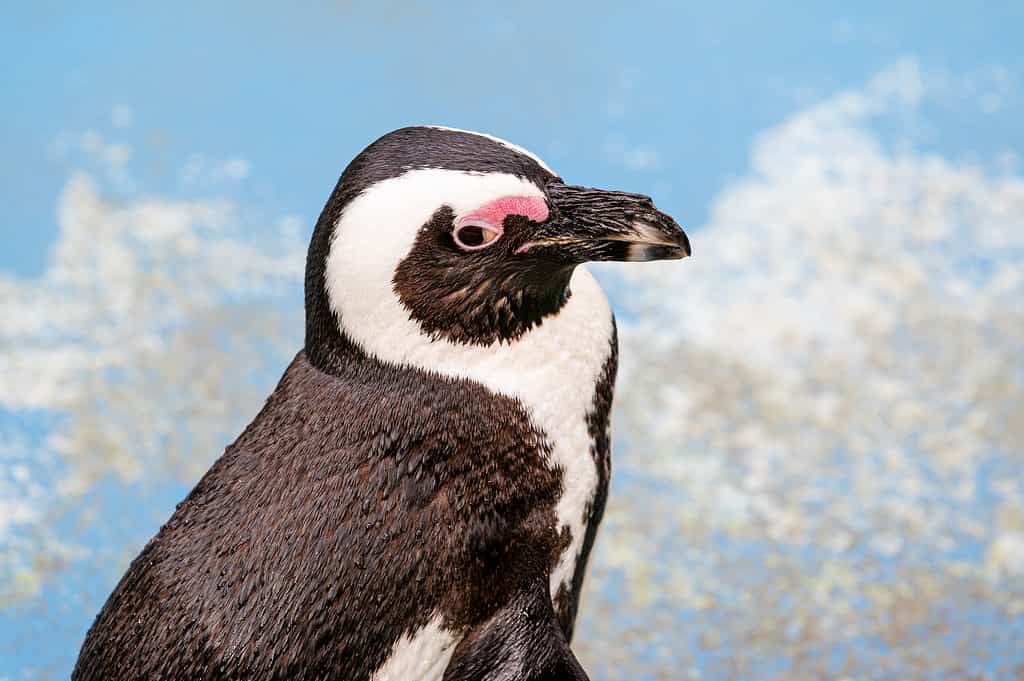While in many bird species, it is easy to tell males and females apart thanks to sexual dimorphism, Penguins (Spheniscidae) are definitely not among them. In most penguin species, both sexes sport identical “tuxedo” body plumage. However, there are five key differences present in at least some species that can help you tell who is who. Read on to find out what they are!
1. Body Size

Although male penguins are often a bit larger than females, the difference is usually not enough to readily tell apart who is who in a penguin huddle!
©iStock.com/axily
In the majority of penguin species, males are reported to be slightly larger on average (taller and/or heavier depending on the species). However, this size difference is often not obvious to the naked eye, especially in a group and/or from a distance.
2. Bill Size

Male African penguins have longer and thicker bills than females.
©Dudbrain/ via Getty Images
In species where the male is larger, it has also been noted that they also have a larger bill (thicker and/or longer depending on the species). This metric has been successfully used to sex multiple species of penguins in the field. For example, a 2013 study found that beak measurements alone could accurately predict the sex of African penguins (Spheniscus demersus) over 90% of the time.
3. Face and Front Colors/Markings

Unlike most other penguin species, you can often tell the male (left) and female (right) apart in Galápagos penguin pairs on sight alone.
©pianoman555/ via Getty Images
In both macaroni penguins (Eudyptes Chrysolophus) and royal penguins (Eudyptes schlegeli), females often have greyer faces. Meanwhile, in Fiordland penguins, males have broader eyebrow stripes. However, Galápagos penguins (Spheniscus mendiculus) are the species with the most noticeable differences between male and female colors and markings. Males tend to have more bolder markings and more pink on their faces; broader and less mottled white chins; and more defined black pectoral bands.
4. Vocalizations

Although male and female king penguins look alike, they sound different!
©David Osborn/Shutterstock.com
Differences in vocalizations between males and females have been reported in both species of great penguins (Aptenodytes spp.). In king penguins (Aptenodytes patagonicus), females tend to have higher-pitched and longer calls with more syllables than males. In emperor penguins (Aptenodytes forsteri), females also have calls with more syllables than males, although they are of similar length.
Additionally, males of many species have unique calls associated with attracting mates (see next section).
5. Courtship, Mating, and Eggs

In all but one penguin species, both mom and dad take turns incubating.
©Gerald Corsi/ via Getty Images
Last but certainly not least, one sure way to know who is who in a penguin couple is to witness courtship and mating and see who ends up laying an egg!
Every penguin species has its own unique courtship ritual, which in many cases involves the male performing physical and vocal displays to attract the female. As with other birds, the male then mounts the female to perform the mating act. The female is then of course the one to actually produce the egg(s). However, both males and females then share the egg incubation and chick-rearing duties. The sole exception is the emperor penguin; in this species, the eggs are incubated solely by the male.
Summary of Male vs Female Penguins: 5 Key Differences
| Trait | Differences |
|---|---|
| 1. body size | males slightly larger (most species) |
| 2. bill size | females have grayer faces (macaroni penguin & royal penguin); males have broader eyebrow stripes (Fiordland penguin); males have multiple differences in face and chest markings (Galápagos penguin) |
| 3. face and front colors/markings | females have grayer faces (macaroni penguin & royal penguin); males have broader eyebrow stripes (Fiordland penguin); males have multiple differences in face and chest markings (Galápagos penguin) |
| 4. vocalizations | differences in length and/or pitch of call between males and females (emperor penguin & king penguin) |
| 5. courtship, mating, and eggs | males perform displays to attract females (majority of species); males mount females (all species); females lay eggs (all species); males incubate eggs (emperor penguin only) |
The photo featured at the top of this post is © Sergey Didenko/Shutterstock.com
Thank you for reading! Have some feedback for us? Contact the AZ Animals editorial team.






